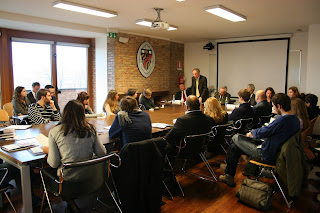Just what counts most in an application to SAIS?
There are many elements -- an academic transcript, a CV, letters of recommendation. In the case of non-Americans who apply to the
Bologna Center, we require proof of English proficiency. All of this contributes to the picture of you that will be seen by the Admissions committee.
One of the most important pieces, because it offers you a chance to distinguish yourself and to put your mark on the application, is the
statement of aims.
We receive lots of questions about this document. That's in part because it is not such a widespread practice in some countries outside the United States. But also because candidates quite rightly wonder what it is that they should squeeze into the 500 to 600 words making up the statement.
So what makes a solid statement of purpose?
 |
| Porticos - by Laura Moens BC'11 |
First, put yourself in the shoes of an Admissions committee member. Typically this person -- an Admissions Office expert, a SAIS administrator, a faculty member, perhaps a SAIS student -- will be reading a number of applications. They will want to know what distinguishes you from the pack. We are not talking about grandstanding.
How would you stand out at SAIS? How would you make a difference afterwards in a career?
The statement of purpose is a window on you -- your formative experiences, values, character and promise. That's a lot to express in such a tight space. But you can save space by ensuring that the statement is not:
- a list of accomplishments
- a repeat of your CV
- an essay on how to save the world
(I was tempted to say that the writing should not be full of flourishes, but now remember that on the application to the college I ended up attending, I wrote a poem. Lucky Admissions committee. In your case, you might consider a tightly written, well crafted essay that has no extraneous words, no grammatical or spelling errors and stands on its own two legs.)
In
Monday's post, we discussed the first steps in preparing an application, and they were to ask yourself two questions: Why am I interested in SAIS? And how would a SAIS education benefit me?
The good news is that the answers to those questions will make up the backbone of your statement of purpose. You'll be in a better position to say:
- what makes you special
- how you would contribute to SAIS
- what you might do with a SAIS education
Finally, as a former wire service reporter, I can't resist these tips:
- It's harder to write tight than loose; make sure each word counts.
- The length limit is there for a reason; use it to your advantage by saying all you have to say, and saying it well, in that space.
- Use your voice, not someone else's; make sure you are sincere.
- This is a personal essay, not an academic paper; you can be creative.
Obviously there is no one way to write a statement of purpose. If anyone would like to discuss the essay, feel free to send me an
email. I'd be happy to discuss it.

(Yesterday we posted our
first quiz. Your answers are still welcome. Hint: the right answer is not hard.)
Nelson Graves



















